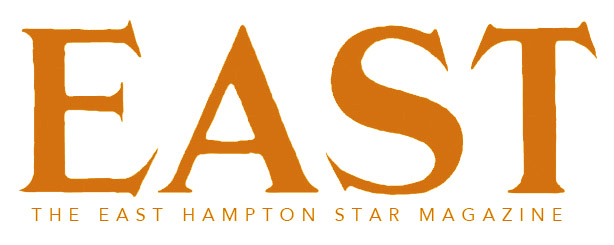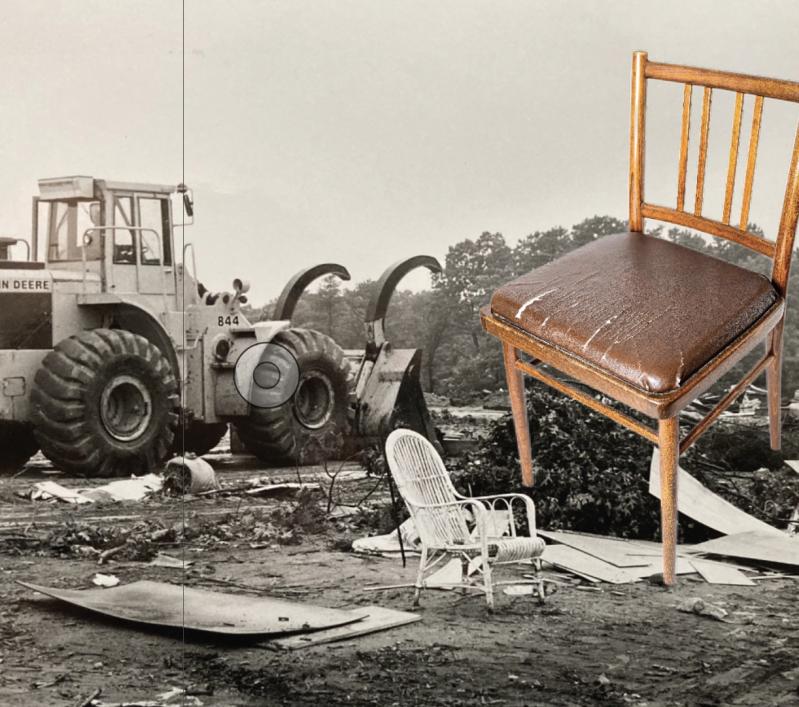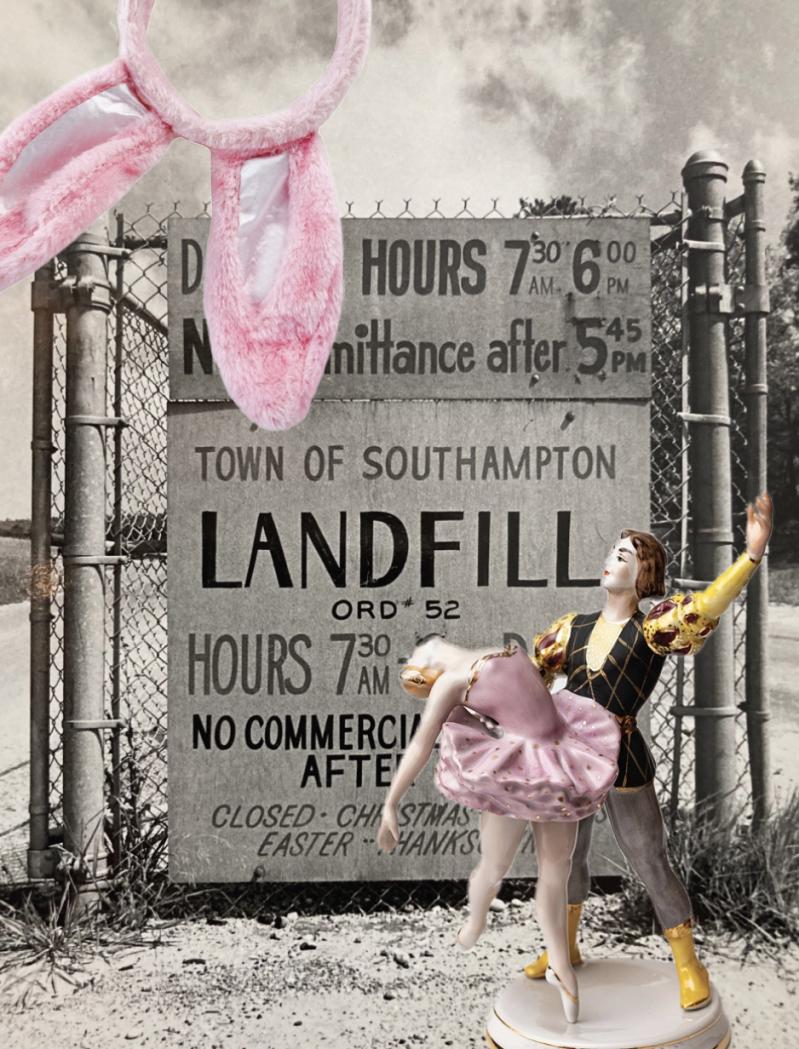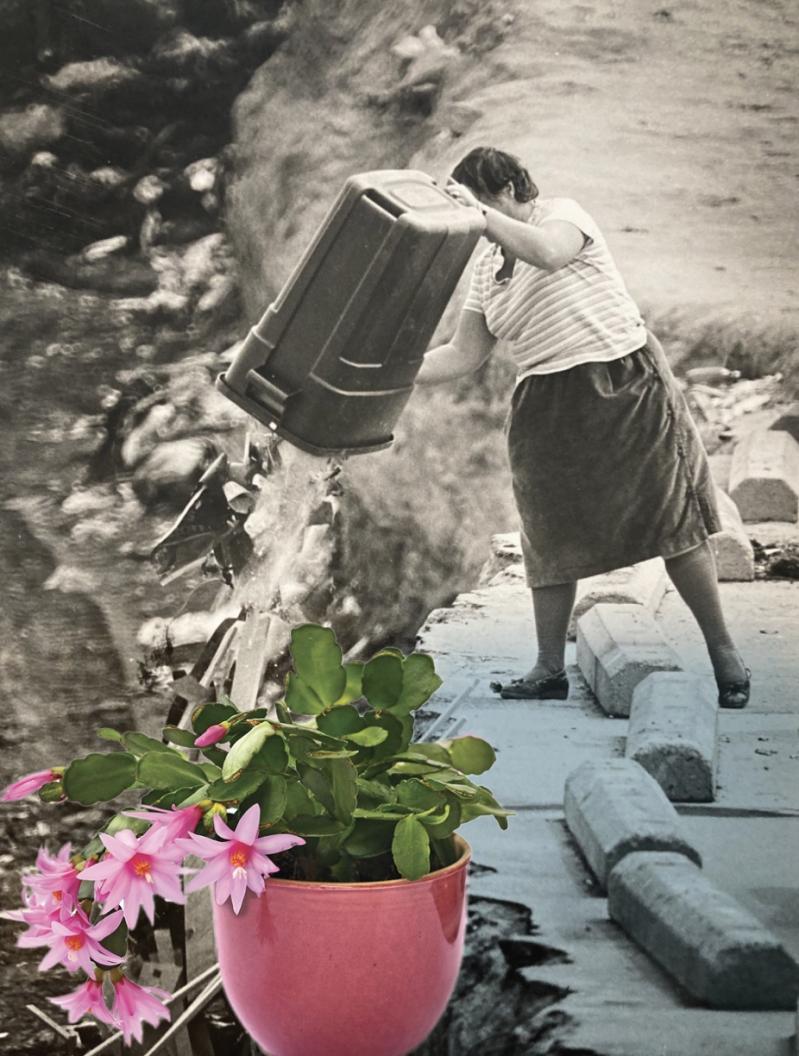I did not grow up recycling.
A city kid from an affluent family, the only re-use I ever witnessed was my mother handing my brother’s and my outgrown T-shirts to the woman who cleaned our apartment to use as rags. Everything else was discarded: Outgrown school uniforms, discolored lampshades, a New York Giants football helmet (I was a stubborn Jets fan), the oriental rug with the ink stain from a chemistry set mishap, and the steady stream of duvets with burn holes from my mother smoking in bed got tossed into one of the incinerators looming large on each floor of our 20-story apartment building. True to its title, the “incinerator” had a hinged iron door opening to a chute funneling to an always-roaring fire below. Any resident need only travel a few steps outside their apartment, down a carpeted hallway, to stuff, toss, or pour objects into the awaiting flames. I’d stand on tiptoe dangling a yo-yo as far as its leash would allow, before releasing it and delighting in the cling-clang echoes as it pinballed its way to the blaze below. A dragon with jaw always agape, as I imagined the flame belonged to, our incinerator burned 24/7 — always hungry for whatever we could conjure to feed her. The dragon was my hero when devouring evidence of uneaten brussels sprouts or a seventh-grade book report adorned with a C minus, and my evil nemesis when cruelly cremating stuffed animals I’d stored in a Hefty bag that our house cleaner mistook for trash.
The East End treated detritus differently even back then. My family didn’t have a home here, but plenty of my classmates growing up did, and when I’d houseguest, I was fascinated by how things were and weren’t disposed of, compared to the wasteful refuse habits of city dwellers. My friend Jason had a house in Amagansett with an iron and glass coffee table his mother rescued from the East Hampton dump. My friend Elizabeth’s family in East Hampton had an enormous, dented pot they used to boil lobsters and another equally dented pot to steam corn. Could these families, who sent their children to the private school where I met them, afford to purchase a coffee table from a store? Or replace banged-up cookware? Of course. But on the East End, as I witnessed again and again, re-use was virtue and provenance currency; the means of procurement imbued one with street cred, serving as source for pride and eternal fuel for cocktail party banter. “This lawn furniture belonged to Martha Stewart’s daughter!” “Can you believe I found this surfboard leaning against the dumpster at Mecox Beach?” “I use the croquet mallet I got for $4 at a Further Lane Estate Sale to tenderize meat!”
I longed to tell such tales . . . to garner rich history via recycling. This was a big part of what drew me out here on a more permanent basis starting in my 20s, first to East Hampton, then Bridgehampton, and eventually to Sag Harbor. Locals and weekenders alike tout unparalleled light, pristine beaches, farm fields, and, sure, there’s that. But what most beckoned and charmed me was how one person’s cast-off transformed into another’s trophy. And how this shared practice created a collective ethos within the community.
Just after graduating college, I rented a house on a street called the Circle just behind the movie theater in East Hampton. The house was an early investment property of a Hampton’s real estate icon named Frank, and he told me he furnished the home “with the finest Scully and Scully by way of the dump.” Evidencing my landlord’s claim, the beds, nightstands, and sofa as well as all glassware, plates, bowls, and utensils appeared deeply worn — veterans of previous (upscale) wars. I adored that rental’s faint scent of mildew, heralding a past greater than mine, wafting towards me as I opened the front door, and that aroma became the perfume I sought to replicate when furnishing the new-construction home in Bridgehampton I bought the following year.
I was only 24 when I bought my first house on the South Fork, so unless I had peers staying at my house as guests, the people I met and hung with were north of 40. These were established adults with either no kids or grown kids. They had nicer homes filled with nicer things than I had accrued. Bob Levenson was my boss in advertising at the time and he and his wife, the artist Kathe Tanous, would regularly have me over for drinks or a meal. I’d joke, “I came with a bottle of wine and left with a lamp,” because they constantly offered me items they were replacing. Besides lamps and end tables and a desk, they once insisted I take home six pool loungers they had just upgraded beyond. The loungers were the polished-wood type you see on cruise ship decks in old photos of transatlantic crossings. “My house doesn’t have a pool” I politely protested, but Bob and Kathe felt strongly the loungers belonged in my possession. . . . So I lined them up precisely, like I’d done with toy soldiers as a child, facing the open field next to my house. I’d recline on one of them most mornings, sipping my coffee, looking like the world’s earliest arrival at Coachella.
Judy and Mel Weiss were another older couple I knew from the advertising world. They had recently traded in corporate life to buy and operate a liquor store along Springs Fireplace Road. An original member of Noyac Golf Club, Mel consistently impulsively upgraded his irons, drivers, and putters, passing along to me his barely used older clubs. I pieced together full sets friends used when they visited me, hacking around Poxabogue’s nine holes with Pings and Mizunos befitting PGA play. Mel’s wife, Judy, was an outstanding cook and regularly gifted me unusual kitchen items she purchased as an experiment and had since rejected. Judy gave me a device to get pits out of olives, another gadget to stuff things into olives, and a salad spinner requiring me to step outside and swing my arm in a centrifugal-force circle, like a pitcher loosening up on the mound. I understood it was less an honor to receive these items than it would have been a dishonor to refuse them. Implicit and unspoken were the guidelines; it was incumbent on me to find a suitable home for anything I didn’t wish to personally house.
This was my boring salad spinner. My thrift shop putter. My Caldor fireplace tools. I treated these, as well as too many wooden spoons, mixing bowls, lobster pots to count (how many lobster pots can someone use?) like foundlings in need of loving families. It felt defeating when I’d be turned down, like when my brother said he couldn’t adopt one of my three push lawnmowers — and my small house amassed clutter. Fortunately, my friend Michael introduced me to East Hampton Town Dump’s household exchange area (years before they christened it “Household Exchange Area” and rebranded the dump a “transfer station”). I had heard folks lovingly reference it, of course, but hadn’t personally understood, until Michael took me there on a series of specific days (Mondays and Fridays) at specific times (10:00 a.m. and 1:00 p.m.), just how special this place was. The allure wasn’t immediate; the dump smelled like eggs cracked open before the advent of color TV, and the divebombing seagulls appeared to be auditioning for a Hitchcock remake. But eventually I warmed to the experience (and I started covering my nose with a bandanna) and understood how much treasure was deposited at that dump daily. A morning at the dump was a hybrid of museum opening and Easter-egg hunt. Eyes widened and gasps were audible as folks watched other folk deposit leather-bound books, Persian carpets, oversize aquariums, professionally framed artwork, vintage Tiffany lamps, and stainless refrigerators. My own pulse quickened witnessing the swooping and grabbing for possessions so recently relinquished that they were still warm from the previous owner’s touch.
I became such a habitué of the dump that I got to know the regulars and staff there. One supervisor, seeing the quality of some china cups and saucers I had stacked Jenga-style atop a mound of dirt, asked if I knew of the Ladies Village Improvement Society thrift shop. Until then I had not. The supervisor raised their eyebrows and lowered their voice to secret-sharing volume, explaining, “The dump doesn’t offer tax deductions. L.V.I.S. does.” I called the L.V.I.S. thrift shop and was told the designated hours to bring in “donations.” I liked the idea of being promoted from dumper to donor and became an L.V.I.S. regular. If you valued vintage, the L.V.I.S. was the best; the boxy-cut Alligator polos that Lacoste stopped making, original L.L. Bean boots, LV duffle bags, suitcases and steamer trunks, Fiestaware in every color imaginable, and on.
Of course, the progression of life brings with it more things, and the need for more ways of purging those things. After my son was born, I dispersed constantly: outgrown clothing, toys, a crib, a bassinet, a pricey gliding chair that seemed like a good idea at the time. When I inherited my four other kids through marriage, the yearly amassing of items grew by an exponent of five. We held yard sales. Lots of them. Not those precious ones with big pricing and newspaper ads, but sudden pop-up retail extravaganzas on our front lawn, replete with refreshments and stereo speakers blaring rap out an open window, where each of our kids got their own “sales area” and could keep their proceeds (though we had bought for them everything they were selling). Our only rule: Whatever goes out on the lawn doesn’t come back in the house — if it doesn’t sell, it’s given away. Compared to dumpsters costing hundreds of dollars, having strangers cart away our discards for free seemed a bargain.
But though we no longer wanted to possess various items, we also didn’t want to feel taken. It was a fine line, knowing a Go-Kart cost hundreds, but also knowing we didn’t want it cannibalizing precious basement space. Who’s to say what an item’s worth is? We’d take collective umbrage when offered 50 cents for a leather jacket we’d slapped a $5 price tag on, though it fit none of the seven members in our household.
And then there were the nutjobs who only wanted our stuff because it might have belonged to someone famous. (My father-in-law is a little famous.) “Did this overcoat belong to him?” some star-f#@er would inquire, and I’d weigh disclosing the truth against how desperate I was for them to buy it. “No, but I believe his eyes once glanced in its approximate direction on his way to the bathroom,” I’d offer as they retreated, shaking their head and making a “tsk” sound.
Neighbors remain my favorite repository in the endless flow of items. Dan and Erik were our amazing next-door neighbors when we first moved into the Sag Harbor house. Childless, Dan and Erik would sip martinis on their front porch, waving and smiling at us as we carted kids to music lessons and sports practices, mounted our yard sales, threw birthday parties, and hosted trick-or-treaters. We imagined they called us “breeders” (though we never heard them specifically utter that word) as they sipped and waved. But as soon as one of our kids set up the lemonade stand, Dan would spring from his chair and hustle across the lawn to purchase the watery citrus brew, always paying with a $20, always saying “keep the change.” Just as our youngest was starting high school these lovely generous neighbors welcomed twin baby girls. Had our familial bedlam rubbed off on them? Would we whisper “breeders” behind their backs? We gave their daughters silver baby spoons (previously used of course) and a beautifully crafted caterpillar pull-toy we had saved for a special recipient.
When Dan and Erik moved to a different house to accommodate their growing family, they left behind the entire contents of their first floor for the lovely folks who bought their place. Caroline and Michael inherited Dan and Erik’s classic taste and never needed to measure which table and chairs would fit in the odd-shaped dining area, or struggle to find the perfect couch to wrap the weird wall by the back sliders.
Caroline and Michael, though new to the East End, immediately embraced its brand of re-use. Always frequenting our yard sales, they never turned down what we purged in their direction. Their toddler happily pedaled our kid’s former Big Wheel around their kitchen.
I learned the hard way to be careful not to commit a microaggression when recycling items. Christine and Malte, our across-the-street neighbors, completed a basement remodel so we gave them a large vintage IKEA dresser, putting a red bow on it and wheeling it across the street atop one of my son’s longboards. When we suggested two more pieces (coincidently from IKEA), Malte asked if it was due to his accent. Malte is Swedish, and we were teetering towards offending him. After that, we made certain our next offering was clearly stamped “Hecho en Mexico.”
Since I couldn’t offer Christine and Malte our Hay wooden dining chairs with rattan seats — Hay is Danish not Swedish, but Scandinavia just felt too close for comfort — and Caroline and Michael had Dan and Erik’s former chairs, I needed to cast a wider net: Fortunately, my dear friends Elizabeth and Tom have a house in East Hampton with the very same Hay chairs. “Elizabeth, I know you have eight matching Hay chairs with the rattan seat, but have you ever considered how great it might be to have 14?” Soon after, my old Hays tucked seamlessly around their dining table, merging with their Hays like a newly blended family (minus the therapy bills.)
Not all recycling has a happy ending. Massive bronze-cast antique lamps I inherited from my mother, though they weren’t my taste, I intended to hang onto. Having grown up mortified by the naked asses of the cherubs swarming these electrified candelabras, I thought it only fair to similarly burden my kids someday with their presence. I got them appraised by an antique dealer in Southampton (let’s call him “Lefty”) who made a cash offer, and when I refused it, a higher offer. “They aren’t for sale” I repeated, packing them back into wooden crates I needed help loading into my truck. I put them in our basement and forgot about them, until we were boxing up the house to move, and I couldn’t find the crates. They were gone. I’m pretty sure Lefty somehow made his way to our basement. (Absolutely no one else this side of Liberace would covet them.) This is my least favorite way of releasing things into the universe: Being stolen from is not fun, even when what is stolen is something you don’t like.
Some re-use stories became family legend. When he was about six, my younger son and I were walking home from a trendy Main Street shop where I had denied him, as he phrased it, “the blender of [his] dreams.” Its high design made its price arguably justified, but we already owned a perfectly functional blender. Walking home, we took a side street and in front of a nearby house, atop a folding table with a sign taped to it saying "Free" sat the exact blender we had just seen, in its original box. “There is a god!” exclaimed my son, embracing the box like his long-lost kitten. It’s still our blender, and I suspect my son still believes in god because of it.
Our family used to frequent a particular sushi restaurant in Sag Harbor. When the kids weren’t with us, my spouse and I ate in the bar area, sitting on this generous maroon leather banquet shaped like a half moon. When the restaurant was gut-renovated, the manager asked us if we wanted the banquet, so it adorned our basement for years behind the billiard table. My friend Lee, visiting our house once, saw the banquet and said, “O.M.G., is that from Sen? My first date with Eric [his husband] was on that banquet!” When I needed to reclaim the behind-the-pool-table space, my first call was to Lee, so he and his husband could recapture their sentimental seating.
Remember the tree with the hollow trunk in To Kill a Mockingbird? Boo Radley anonymously left gifts there for his young neighbors, Scout and Jem. The busy intersection of High Street and Hampton Road serves as my hollow tree. It’s where I leave treasures for passersby to take. From Razor scooters and bikes to nonstick pans, as well as every form of board (boogie, skim, skate, and ironing), there’s a vibe to the items I’ve curated over time, and most things disappear by sundown.
Is the East End more committed to salvage than elsewhere? It seems once someone gets introduced to the intangible magic, they stay. Those who venture off, often return saying there’s no place else like here. I think inanimate things are like that, too. That once a couch gets introduced to the East End, it never leaves; instead, it relocates from room to room then house to house. I’m enormously comforted knowing mine and others’ myriad possessions remain in constant states of repurpose — stuff perennially circulating within the confines of our exquisite corner of this planet. I like that about living here. And so, I imagine, do my things.



